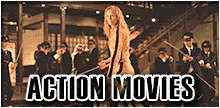Friendly Fire "Proof" - CoverUps.com
On the night of July 17, T.W.A. Flight 800 exploded and crashed off the coast of Long Island, killing everyone on board. For months, investigators focused on three possible causes--- a bomb, mechanical failure or a terrorist missile. While the NTSB eventually concluded that the jet had exploded due to mechanical failure, as far as many people are concerned, what truly happened remains a mystery.
Barely 36 hours after the disaster, a message posted on an Internet discussion site called "rec.aviation.piloting" suggested a darker possibility. "Did the Navy do it?" wrote someone from New York who identified himself as Evan B. Gillespie. "It is interesting how much evidence there is that it was hit by a missile."
Reports from eyewitnesses---who said they saw a streak of light briefly approaching the jet before it crashed---prompted investigators to entertain the idea that someone shot it down. That's now considered the least likely possibility, according to the government party line. Within days of the crash, numerous Net writers mulled over the witness reports, and came to a common conclusion: they speculated that the jet was downed by accidental "friendly fire" from a United States Navy ship on a training cruise. Such a horrifying blunder, according to the evolving theory, was quickly covered up by a conspiracy involving Federal investigators, the military and, of course, President Clinton.
As a study in how conspiracy theories may mutate in the age of easy global communication, the friendly fire story is a gem. On the Internet, conspiracy theories gestate almost instantly, and spread with dizzying speed.
In the case of Flight 800, the process happened fast and with great intensity . The conspiracy theory, which, prior to the freedom of the Internet might have bounced around harmlessly on the fringe, briefly elbowed its way into mainstream coverage. On several occasions, prompted largely by the Internet's conspiratorial buzz, journalists felt compelled to ask officials about the possibility of friendly fire. The authorities labeled it "an outrageous allegation." Should we have expected another response?
The fact that friendly fire came up at all says a lot about the power of the Internet. Here is a chronological review of how a theory catapulted to 15 minutes of fame.
July 17-23:
In the immediate aftermath of the crash, speculation was cheap and plentiful. Some theorists suggested that the true target of the T.W.A.. "attack" was Henry Kissinger, who was supposedly on board. (He wasn't.) Over time, the theories included such notions as the jet being zapped by a death ray possibly operated by a consortium of Russians, North Koreans, and the Japanese Aum Shinrikyo cult. Predictably, some asserted that a U.F.O. was responsible. Did Men in Black accidentally destroy Flight 800?
But only the friendly fire theory developed real legs, thanks largely to a July 21 Jerusalem Post story in which unnamed "French Defense Ministry experts" asserted that "the infrastructure needed to fire a missile powerful enough to hit a plane at that altitude is only possessed by Army units."
Some conspiracy theorists took it as confirmation that the U.S. Government has shot down the World Wide Web, and the story spread rapidly all over the planet. "I think it's pretty obvious," stated one contributor to the "talk.politics.gums" news group, "that T.W.A.. 800 was taken down by a SAM. ...Friendly fire, as it were."
July 24-29:
A posting in the news group "alt.conspiracy" made a more startling claim: Clinton was probably involved. "Two of the passengers were former Arkansas state troopers that were on Bill Clinton's security detail," it read, explaining that the men were on their way to Paris to tell all to Le Monde. The source for this: The Miami Herald.
The "Troopergate" message generated excitement among Net theorists, many of whom believe Clinton to be capable of anything. "Suddenly the T.W.A.. 800 explosion got a whole lot less mysterious," wrote one correspondent in "misc.survivalism." Over at American Online, a subscriber wondered, "How many (total) does that make now of people who have previously known our Komrad Klinton who are now pushing up daisies?"
Aug. 2:
The Miami Herald quickly exposed the trooper message as a hoax. The Herald traced it to the Net address of one Gene Hilsheimer, a Florida resident. The Herald said "Hilsheimer denied creating it, " though he did state later that the posting was probably designed to bait "conspiracy nuts." Other writers surged ahead with the unsupported claim that "there is a report of sailors at seas routinely locking on to airliners during mock missile practice."
Aug. 22:
Friendly fire theories could have stalled at this point were it not for an anonymous message that began circulating in late August. "T.W.A. Flight 800 was shot down," one version stated, "by a U.S. Navy guided missile ship which was in area W-105... a Warning Area off the southeast coast of Long Island."
The message was attributed to "a man who was Safety Chairman for the Airline Pilots Association for many years and is considered an expert on safety." It turns out to have been written on American Online by Richard Russell, a 66-year old Floridian and former United Airlines pilot. Russell later told reporters that he never intended his message---originally a private E-mail communication sent to about a dozen friends who were aviation accident investigators---to be widely distributed.
"Hey, those who want the truth. This is no joke!!!" wrote one fan. "Just read on and watch the papers, knowing where you heard it first. Pretty shocking."
Aug. 28---Sept 1:
As the crash investigation of TWA 800 entered its second month, friendly fire talk began to move beyond the Internet. It was helped along by news reports of more eyewitness anomalies, including the murky snapshot taken by Linda Kabot, a Long Island secretary. Blown up and distributed on the Net, it showed a blip, supposedly a long cylinder streaking through the night sky, allegedly in the vicinity of the doomed jet.
About this time, multiple copies of the Russell opinion began arriving in newsrooms via fax and E-mail. With public speculation about friendly fire becoming a roar, major media outlets decided to take a closer look. On Sept. 1, Newsday launched a preemptive strike on the friendly fire theory, quoting a "senior Federal source" who advised, perhaps wishfully. "You can put that to bed." I don't think so.
Sept. 5-7:
Another mainstream report---this one by a local TV reporter--- helped amplify the Net buzz about friendly fire. On Sept. 5, Marcia Kramer of WCBS-TV in New York broadcast that investigators were examining whether a missile from a "a U.S. military plane" might have torn through the jet without exploding." Her sources? Unnamed officials close to the investigation. Kramer's report was ignored by most of her colleagues, a fact that increased Net suspicion. "This news item did not show up anywhere else on radio or TV during the following day," one Net surfer wrote. "Shades of censorship?"
Sept. 8-17:
In the next several days Newsday, Newsweek, the Associated Press, Reuters and CNN decided they had to take a hard look at friendly fire, "Because so many people were talking about it we felt it was the responsible thing to do, to revisit this question," says Ron Dunsky, a CNN producer whose network investigated friendly fire in July, found no evidence to support it and didn't run a story. Why did it come to the fore again, since there was no new evidence?
"The Internet was part of the reason," he says, "one of the factors that tipped the scales." At a Sept. 16 news briefing on Long Island, Federal Bureau of Investigation and National Transportation Safety Board officials found themselves under unfriendly fire, so to speak, from the press corps. The investigators responded to at least four straight questions about the theory---including one from CNN, which later that day ran a serious report on friendly fire. It mentioned the Russell-authored message and conveyed emphatic denials from the Government. As far as Washington is concerned, business as usual.
In his case, adding to his credibility, is the fact that Russell can't be accused of seeking out publicity. He says he has been contacted by several major television shows, but he won't give up his source. Unless Russell decides to say more, or his claimed source comes forward, this matter will never truly be resolved, one way or the other.
AND SO IT GOES:
Though the Russell-gram could have become dead end, the Net has made it immortal. On Sept. 27 Tom Snyder, on his "Late Late Show," announced that he'd just found the message on the Net and wondered aloud---albeit skeptically---about a Government cover-up.
Then on Nov. 8, friendly fire made headlines again. This time it was Pierre Salinger---the noted journalist and Kennedy Administration press secretary---who went public with the theory. Salinger, according to news accounts, said his source was a document given to him by "someone in French Intelligence in Paris," written by an American who "was tied to the U.S. Secret Service, and has important contacts in the U.S. Navy."
Apparently, though, the document was the Russell message, or at least a clone of it. CNN showed Salinger a copy of the message, and he said: "Yes. That's it. That's the document. Where did you get it?" He also told other reporters that he learned only after he went public on Nov. 7 (U.S. media ran the story the next day) that the same document had been on the Net for weeks. He said the message was dated Aug. 22---the same day Russell sent his famous E-mail.
As Mr. Spock always says on classic Star Trek episodes, "Fascinating"!
TWA 800 CoverUp Overview * Friendly Fire, Salinger Style
The Fuel Tank * Visitor TWA Thoughts * Our
TWA Conclusion
More on "Missle" / "Metor"
Theory * The FBI
TWA CoverUp Content Copyright © 1996 to by The Web Network Inc
HauntedHouses.com * MurderMysteries.com * Romances.com












